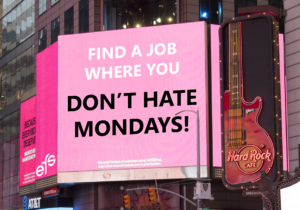Specific Aims

Most people agree that the Aims page is the single most important part of your grant. It sets the stage for your entire proposal and is often the only page of your grant viewed by everyone on study section. During the study section meeting, I pull up the Aims page of every grant we discuss and skim it while the discussion is happening. For better or worse, reviewers often decide their overall level of enthusiasm for your entire grant after reading the Aims page. I have written more Aims pages than I can count and I’ve learned several valuable lessons along the way. Here I’ll start with the “How” – the process of writing the Aims – and then address the “What” – the content of the Aims page.
THE PROCESS
- Start early – and I mean EARLY!! I typically start my first draft 3-6 months before the grant is due. For me, the ideas for my hypothesis and aims need a lot of dwell time in my brain. I don’t worry about the quality of the first draft (it’s usually garbage) but I force myself to put something down on paper to get started. You know that meme of the horse drawing with the beautiful back half and kindergarten front half? The Aims page in my head is the back half. My first draft – the front half.
- Anticipate 12-15 (or more) versions before you get it right. I will work on my Aims page intermittently and for limited chunks of time. I typically pull it out once a week (or whenever I have a flash of inspiration) and work on it for 30 minutes or an hour. I can’t “brute force” an Aims page. There is something magical that happens in my brain during those periods in between actually working on the Aims. The ideas come into focus, threads between the Aims emerge, the ideas begin to self-assemble into a coherent structure that I incorporate into the next round of edits. The cycle continues until I have a mini-epiphany around the 12th-15th version when suddenly everything clicks and I’m done.
- Don’t work on any other part of the grant before you finalize your Aims. Trust me on this. I made this mistake on my first K08 proposal (back when they were 25 pages and written with a quill pen). I wrote the entire grant with the first version of my Aims page, which was an absolute waste of time as I could not use much of what I worked on when I finally got the Aims right. Everything is tied to the Aims – your collaborators, the budget, required approvals (IRB, IACUC, etc), preliminary data, and the list goes on. You’ll find that once you nail the Aims, the rest of the proposal comes together relatively easily.
- Get feedback. Once I’m on version 5 or so, I start getting feedback from mentors and colleagues who understand the science. Seeing my Aims page through their eyes is incredibly helpful. Once the Aims are looking pretty good, I get feedback from a scientist outside of my field to ensure that it resonates with non-experts. This is so important as your NIH reviewers may not have the content expertise but still need to understand (and love!) your Aims page.
THE CONTENT
- Establish a strong rationale. Don’t skimp on this and assume your reviewers will appreciate the scope of the problem.
- Build a solid scientific premise. This is the foundation of your hypothesis. Don’t ignore controversies in the field or “hide” a major finding that contradicts your hypothesis. Rather, leverage the debate to your advantage.
- Clearly describe the knowledge gap. Your science should fill in a critical knowledge gap that is necessary for forward progress.
- Have a testable hypothesis. Don’t be afraid to take a stand. If your hypothesis is not testable, your grant falls apart. Do this by using words with an action and/or a direction. Words like increase, decrease, attenuate, exacerbate are good. Avoid words like modulate, affect, regulate. Doing work that is not hypothesis driven? Replace a testable hypothesis with a clearly defined goal.
- Include a hypothesis (or study design) schematic. This serves so many purposes. It helps me write my Aims – if I can’t draw out what I am doing I won’t be able to clearly explain it in words. It serves as a visual anchor for reviewers and provides a framework on which to place the pieces of your proposal. It’s useful to non-reviewing study section members who are looking at your Aims page during the discussion. Make your figure de novo (don’t just copy something from the literature) and only include things that are directly relevant to your proposal in the schematic.
- Give a general sense of the methods. “Using transgenic mice we will define the signaling pathway…”, “Using mixed methods we will define the barriers to…”, “We will conduct a prospective, randomized Phase II study to test…” No need to go into a lot of detail here but the Aims should give a general sense of the tools and models you are using to answer your specific scientific question.
The best way to help yourself reach a fundable score is submitting an excellent Aims page. Reviewers want to be excited about your grant; give them a page that does it!
ADDITIONAL RESOURCES
Sell Your Specific Aims Using the Pastor Method
Fresh Ideas for Writing Innovation in Your NIH Grants
Lessons Learned While Building a Career: Grants






2 Comments